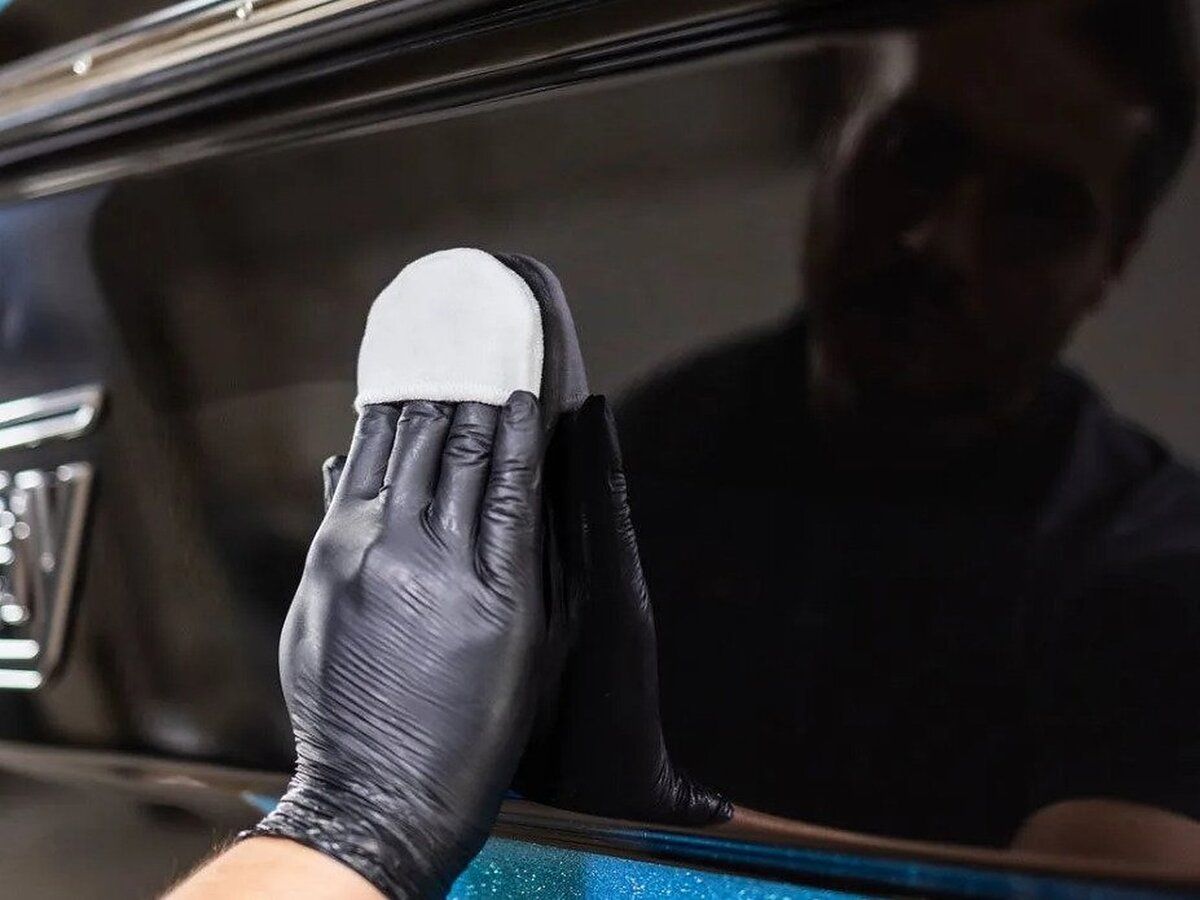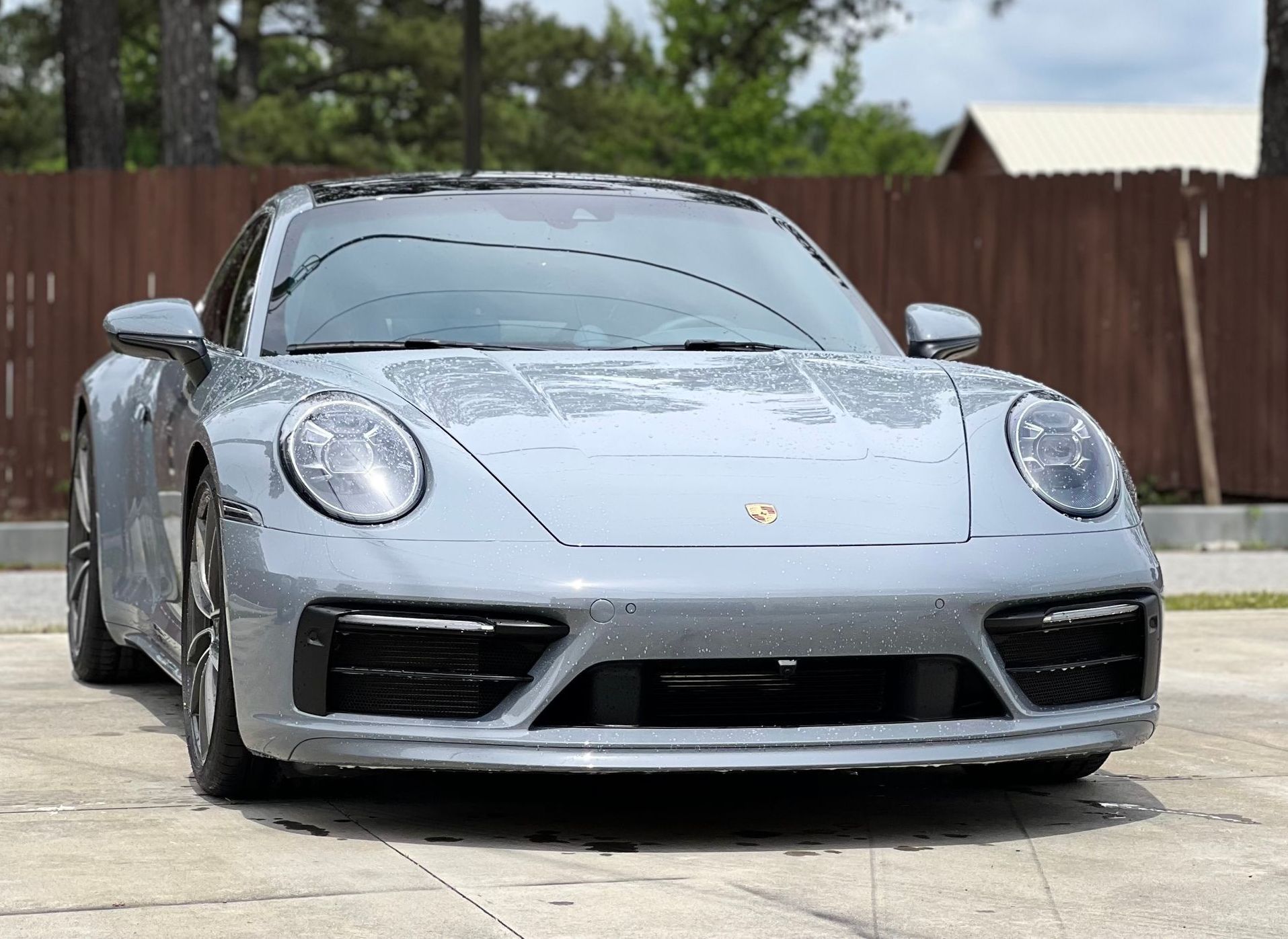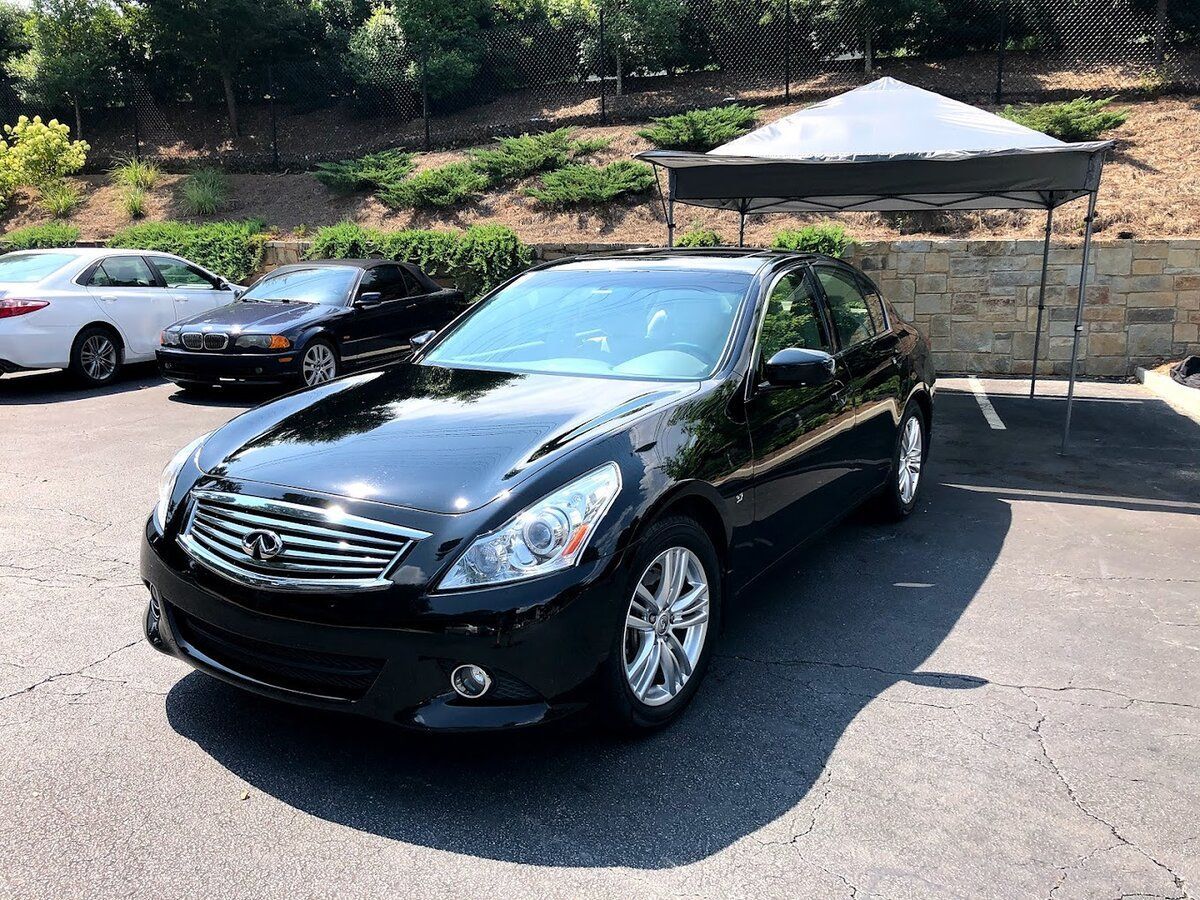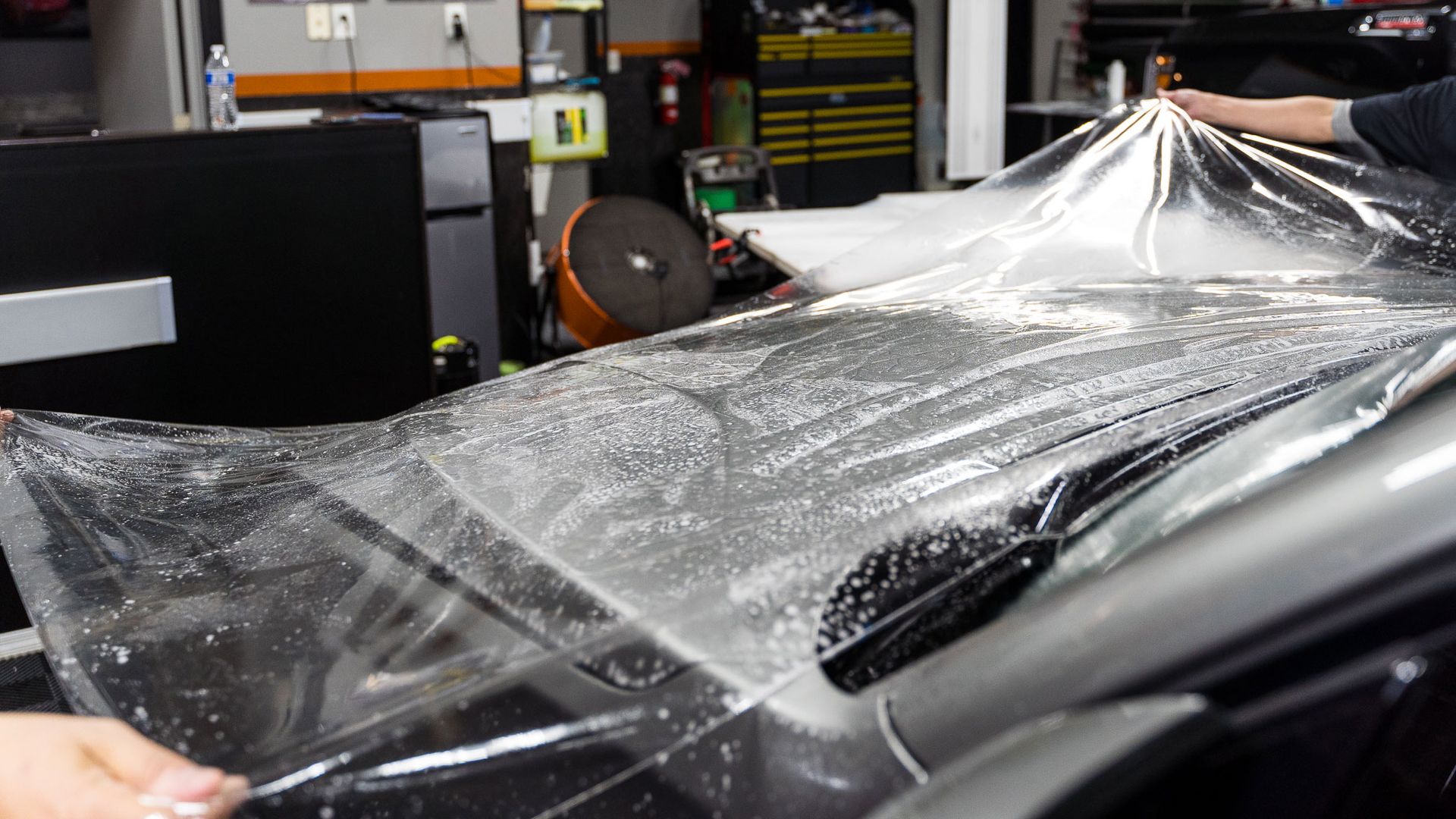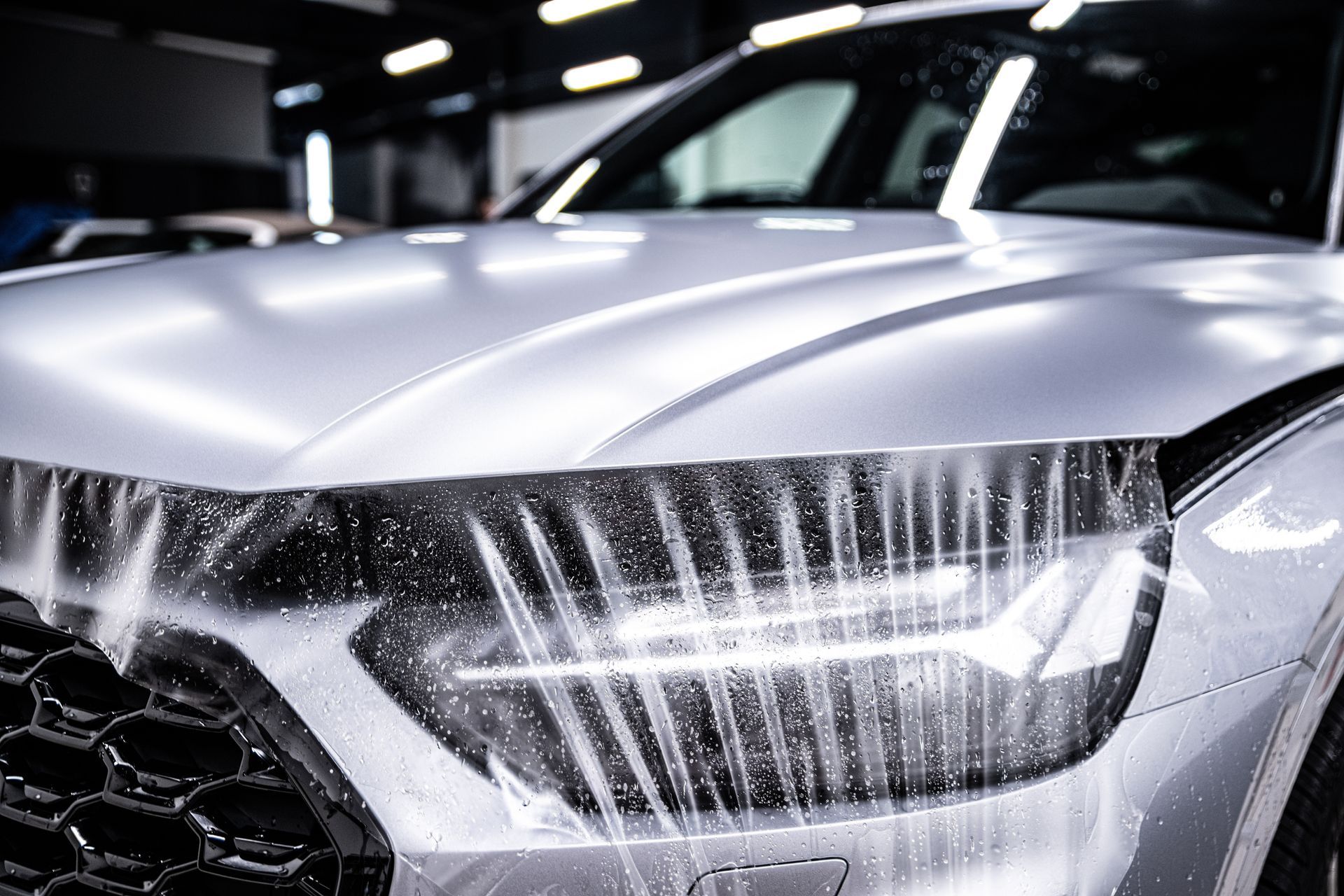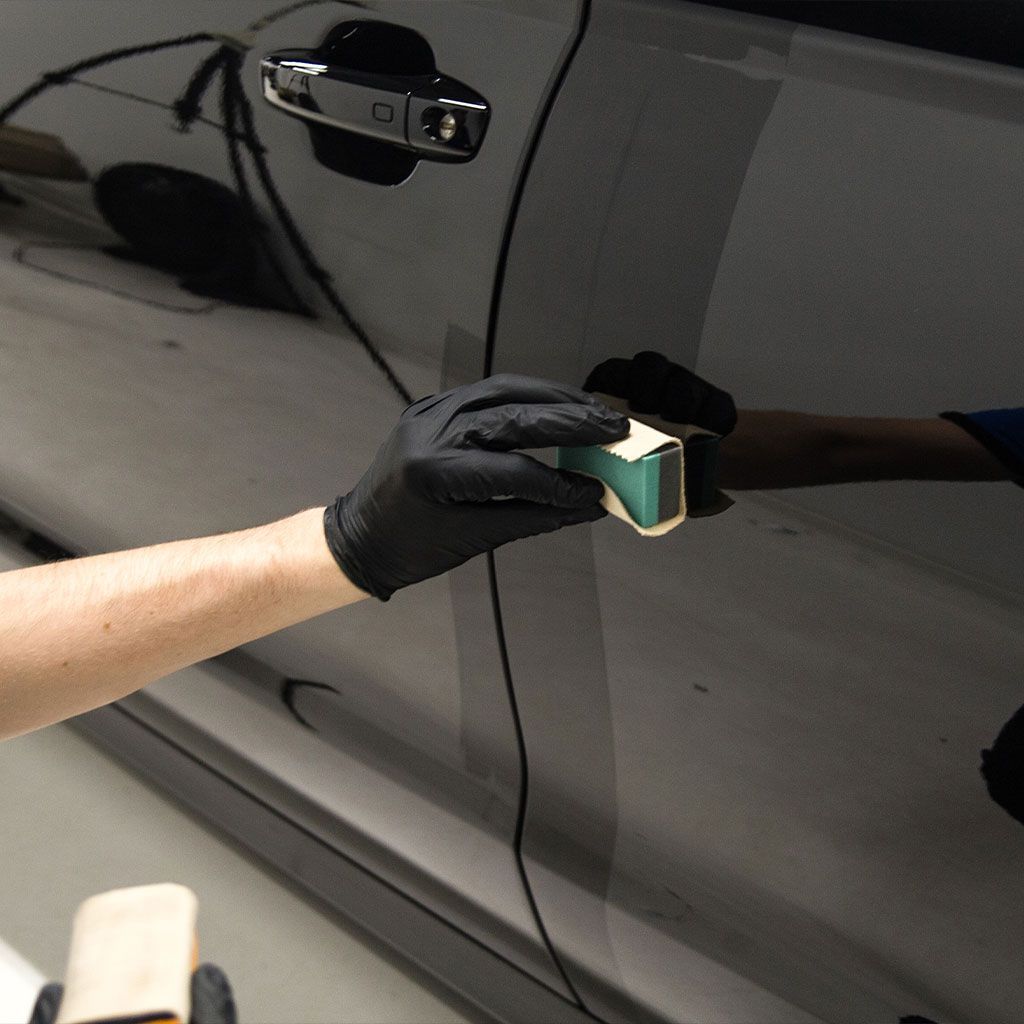Common Mistakes to Avoid During Paint Protection Film Installation
GET A QUOTECALL (770) 722-3486
When it comes to preserving the exterior of your vehicle, paint protection film (PPF) is a game-changer. PPF acts as an invisible shield, safeguarding your car's paint from various forms of damage, including rock chips, scratches, and environmental contaminants. However, the effectiveness of PPF largely depends on the quality of the installation process. To ensure you get the most out of your investment, it's essential to avoid common mistakes that can compromise the performance of your PPF. In this blog, we'll discuss these mistakes and how to steer clear of them.
Preparing a Vehicle for Paint Protection Film
Before embarking on the installation of paint protection film (PPF), it is crucial to thoroughly prepare the vehicle's surface. Taking the time to properly clean and assess the condition of the paint will help ensure a successful installation and long-lasting protection.
The first step in preparing your vehicle for PPF installation is washing it thoroughly. Begin by rinsing the car with water to remove any loose dirt or debris. Next, use a gentle automotive soap or pH-neutral cleaner and a soft wash mitt to remove any remaining dirt or grime. Rinse the car again, making sure all soap residue is completely removed.
After washing, it's important to dry the vehicle using a microfiber towel or drying cloth. This helps prevent water spots and allows for better adhesion to the PPF. Pay close attention to areas where water tends to collect, such as around door handles, mirrors, and emblems.
Once the vehicle is dry, closely inspect the paint for any imperfections such as scratches, swirl marks, or oxidation. It's important to address these issues before installing the PPF, as they can be more noticeable once the film is applied. Consider performing a paint correction process to eliminate any defects and restore a smooth surface.
In addition to paint correction, another essential step in preparing your vehicle for PPF is ensuring that all surfaces are free from wax, sealants, or other contaminants. These substances can interfere with the adhesion of the film and compromise its effectiveness.
For instance, let's say you recently applied a layer of wax or sealant to your vehicle. Before proceeding with PPF installation, make sure to remove any residues left behind by these products. Using an alcohol-based solution specifically designed for this purpose can help dissolve and eliminate any lingering contaminants on the surface.
It's worth noting that preparing your vehicle for PPF installation may require professional assistance, especially for complex or challenging surfaces. Consulting with a paint protection specialist can provide invaluable guidance and expertise to ensure optimal results.
Cleaning Techniques to Avoid
When it comes to cleaning your vehicle, it's important to be mindful of certain techniques that can inadvertently cause damage to the paint surface or adversely affect the performance of the installed paint protection film. By avoiding these common mistakes, you can maintain the quality and longevity of both your vehicle's appearance and the protective properties of the PPF.
- One key mistake to avoid is using abrasive materials or aggressive scrubbing motions. This can lead to scratches, swirl marks, or even blemishes in the PPF itself. Instead, opt for soft microfiber towels or foam applicators when applying cleaners or performing routine maintenance on your vehicle.
- Another cleaning technique to avoid is using harsh chemicals or solvents that are not specifically formulated for automotive use. These substances can potentially strip away protective layers, compromise the adhesive properties of the PPF, or even cause color fading. Stick to products recommended by professionals or specifically designed for automotive applications.
- It's also important to be cautious when using automatic car washes, particularly those with harsh bristles or brush mechanisms. These devices can potentially scratch or damage the PPF and should be avoided if possible. Opting for touchless or handwashing methods ensures a gentler approach that minimizes risks.
By being mindful of these cleaning techniques to avoid, you can maintain the integrity of your paint protection film while keeping your vehicle looking its best.
Mistakes in Wax and Cleanser Removal

One of the crucial steps before installing paint protection film (PPF) is ensuring that the surface of the vehicle is clean and free from any contaminants. However, there are common mistakes to avoid when it comes to wax and cleanser removal.
- A common mistake is not thoroughly removing all traces of wax or polish from the surface. These products can create a barrier between the PPF and the vehicle's paint, leading to poor adhesion and potentially causing the film to peel over time. To prevent this, it is important to use a wax or polish remover that is specifically designed for automotive surfaces. Follow the instructions carefully, making sure to remove all residue.
- Another mistake is using harsh cleaners or solvents during the cleaning process. While it is necessary to remove any dirt or grime from the surface, using abrasive cleaners or chemicals can damage both the paint and the film itself. Instead, opt for gentle automotive soaps or cleaners designed specifically for PPF maintenance. These products will effectively clean the surface without causing harm.
By avoiding these mistakes in wax and cleanser removal, you can create an ideal foundation for proper paint protection film installation. Now let's shift our focus to another critical aspect of achieving a successful installation: common errors in film positioning.
Common Errors in Film Positioning
Properly positioning the paint protection film on your vehicle requires precision and attention to detail. Making even minor errors during this process can result in unsightly gaps or uneven coverage, compromising the overall effectiveness of the film.
One common error is failing to align the edges of the film correctly with the vehicle's body panels. This can lead to visible seams that not only detract from the aesthetic appearance but also create areas where dirt and moisture can accumulate, potentially causing damage to the paint in those spots. Carefully lining up the edges of the film with the contours of the vehicle and ensuring a smooth transition will help avoid this issue.
Another mistake that often occurs is stretching or applying too much tension to the film during installation. This can cause the film to distort and create an uneven surface, resulting in a less appealing finish. It is essential to follow the proper stretching techniques provided by the manufacturer and seek professional guidance if necessary to ensure a uniform application without overstretching.
Correctly positioning the film is crucial for achieving seamless protection for your vehicle's paint. In the following sections, we will explore other challenges related to edges and corners during PPF installation.
Troubles with Edges and Corners
When it comes to paint protection film installation, one of the most common challenges that detailers face is dealing with edges and corners. These areas require extra attention and precision to ensure a seamless and secure application.
The corners of a vehicle, such as the edges of the hood or the curves around the fenders, can be particularly tricky. The film needs to be properly stretched and positioned to fit snugly without any wrinkles or bubbles. If not done correctly, these problem areas can become magnets for dirt, moisture, and even peeling.
By following these expert tips and exercising patience during installation, you can overcome troubles with edges and corners, resulting in a flawless and long-lasting paint protection film application.
Adhesive Application Missteps
Apart from dealing with edges and corners, another area to be cautious about during paint protection film installation is adhesive application. Mishandling this crucial step can lead to poor adhesion, air bubbles, or premature lifting of the film.
One common mistake detailers make is not properly cleaning the surface before applying the adhesive. Any dirt, dust, or contaminants on the painted surface can affect the bonding process and compromise the longevity of the film. It's essential to thoroughly clean and prep the surface using approved cleaning agents and techniques.
Some may argue that surface preparation is not necessary for adhesive application if high-quality films are used. However, it's important to note that ensuring a clean and well-prepared surface sets a solid foundation for proper adhesion and enhances the overall durability of the protective film.
To avoid adhesive application missteps during paint protection film installation, consider these expert tips:
- Clean and prep surfaces: Thoroughly wash and decontaminate the painted surfaces before applying adhesive to ensure optimal bonding.
- Follow the manufacturer's instructions: Different adhesive applications may have specific requirements or drying times. Carefully read and adhere to the instructions provided by the manufacturer.
- Apply adhesive evenly: Strive for an even distribution of adhesive across the entire film to ensure consistent adhesion without air bubbles or pockets.
By paying close attention to adhesive application and following these expert tips, you can minimize the risk of adhesion issues and ensure a successful and long-lasting paint protection film installation.
Avoidable Application Errors
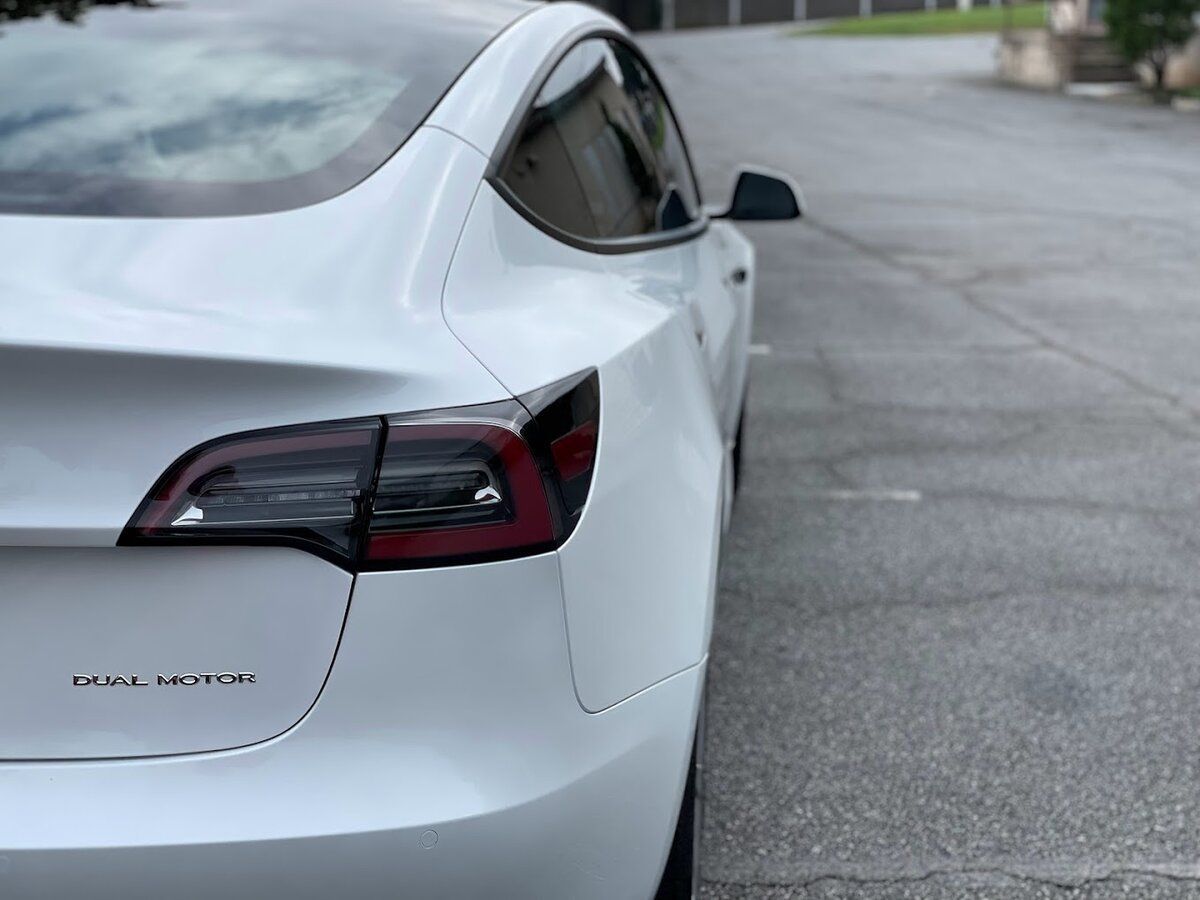
When it comes to paint protection film installation, there are several common mistakes that can be easily avoided with proper care and attention to detail. These errors can lead to unsightly blemishes or even compromise the effectiveness of the film in protecting your vehicle's paint. By being aware of these avoidable application errors, you can ensure a seamless and long-lasting finish.
- One of the most common mistakes is failing to thoroughly clean the surface before applying the film. Any dirt, dust, or residue left on the paint can create bubbles or uneven areas under the film, affecting its appearance and adhesion. To prevent this issue, it's crucial to thoroughly wash and dry your vehicle before installation and use a dedicated surface preparation solution to remove any contaminants.
- Another mistake often made is stretching the film too much during application. While some stretching is necessary to conform it to curved surfaces, excessive stretching can cause the film to thin out and become less durable over time. Care must be taken to apply the film smoothly without excessive tension, ensuring optimum protection and aesthetics.
- Inadequate trimming of the film can result in visible edges or gaps around certain areas of your vehicle. It's important to carefully trim the film along panel lines or edges using precision tools. This will provide a seamless look while maintaining full coverage and protection for your vehicle's paint.
- Rushing through the installation process can lead to errors such as misalignment or air bubbles under the film. Patience is key when applying paint protection film, as it requires careful positioning and smoothing out any air pockets for a flawless finish. Take your time during each step of the installation process, following recommended techniques and guidelines.
By avoiding these common application errors, you can ensure that your paint protection film provides optimal protection for your vehicle while maintaining its visual appeal for years to come.
Professional vs. DIY Installation: Risks and Rewards
Deciding between professional installation or a DIY approach for paint protection film installation is a question many enthusiasts and vehicle owners face. Both options have their risks and rewards, and understanding the differences can help you make an informed decision.
DIY Installation:
Taking a DIY approach to paint protection film installation can be a cost-effective choice, especially if you have some experience in detailing or are confident in your abilities. It allows you to save on labor costs and gives you control over the installation process. You can choose when and where to apply the film, allowing for flexibility.
However, it's essential to consider the risks involved. DIY installation requires a significant amount of patience, skill, and attention to detail. If not done correctly, mistakes can occur that may compromise the effectiveness of the film and even damage your vehicle's paint. Additionally, the quality of self-installation may not match that of a professional installer who has years of experience and access to specialized tools.
Professional Installation:
Opting for professional paint protection film installation offers several benefits. Certified installers are experienced and trained in applying the film correctly, minimizing the risk of errors. They have access to high-quality materials and specialized equipment, ensuring optimal results. Professional installation also typically comes with warranties or guarantees, providing peace of mind knowing that any potential issues will be addressed by experts.
While professional installation comes at a higher cost compared to a DIY approach, it is often worth it for those seeking flawless results and maximum protection for their investment. Experts know how to handle various challenges during application while achieving the desired aesthetics.
Ultimately, your decision should consider factors such as your level of expertise, the complexity of your vehicle's contours, budget constraints, and the desired outcome. If you feel confident in your skills and have previous experience with film installation, a DIY approach might be suitable. However, if you value precision, efficiency, and peace of mind knowing that professionals are handling your vehicle, opting for professional installation is the recommended choice.
Why choose LeJeune Ceramic Coating & Paint Protection?
When it comes to preserving your vehicle's exterior, you need a team of professionals who are not only passionate about cars but also dedicated to delivering superior results. At LeJeune Ceramic Coating & Paint Protection, we have built our reputation on a foundation of expertise, commitment, and quality service. We exclusively use high-quality PPF from reputable manufacturers. We understand the importance of using top-notch materials to ensure the longevity and effectiveness of the protection film. You can have confidence in knowing that your vehicle is in the best hands because of our unwavering commitment to quality. Book us today!


